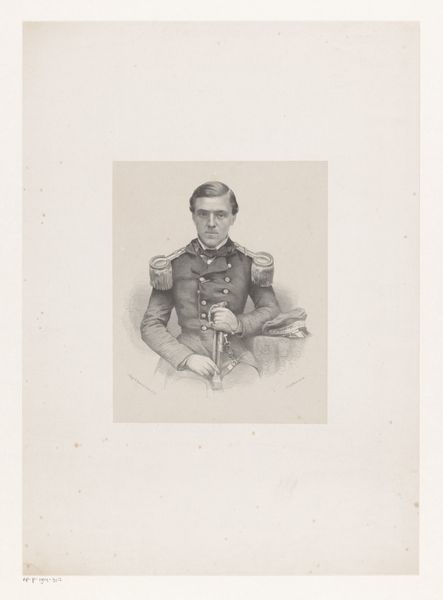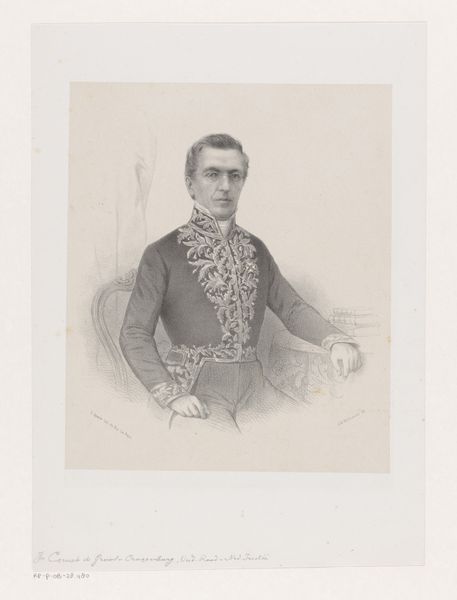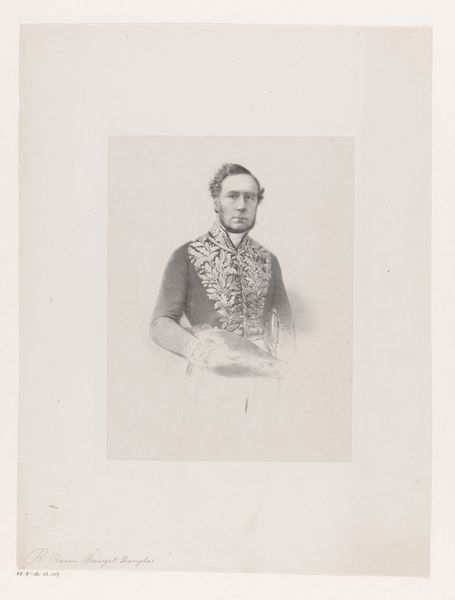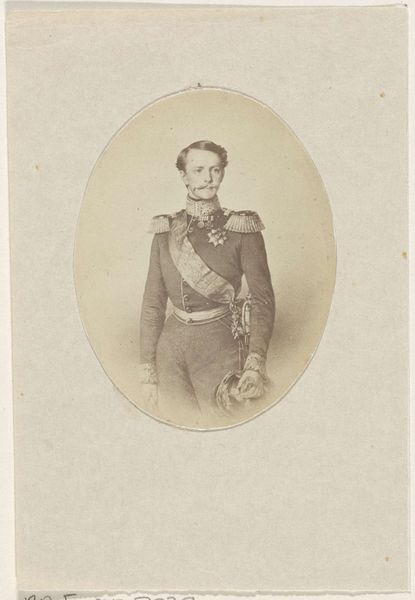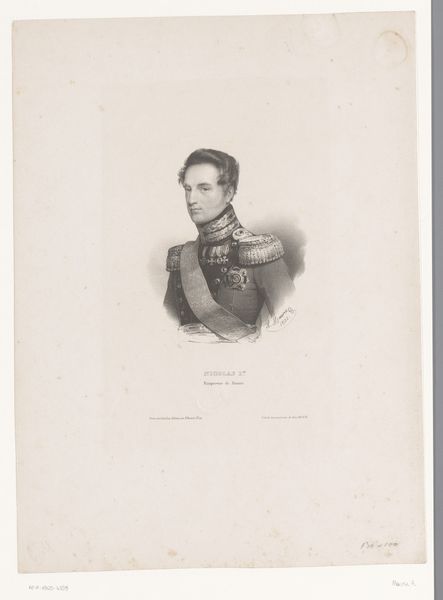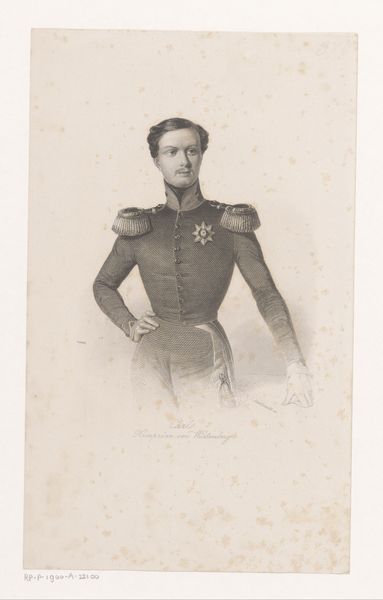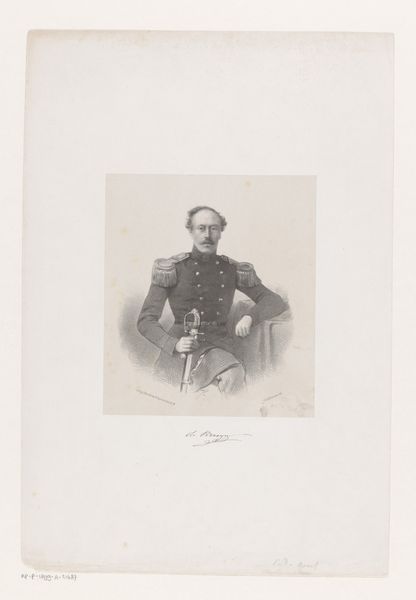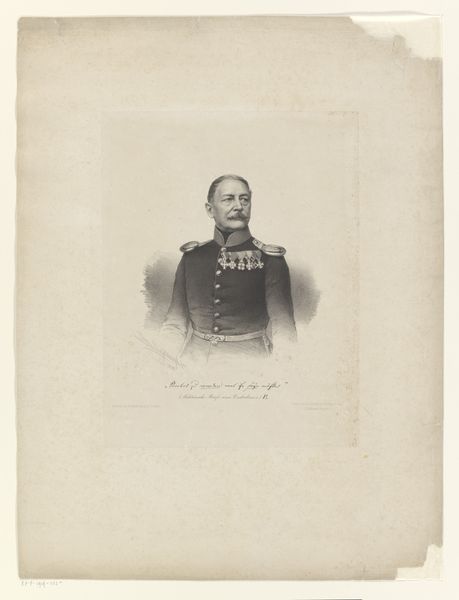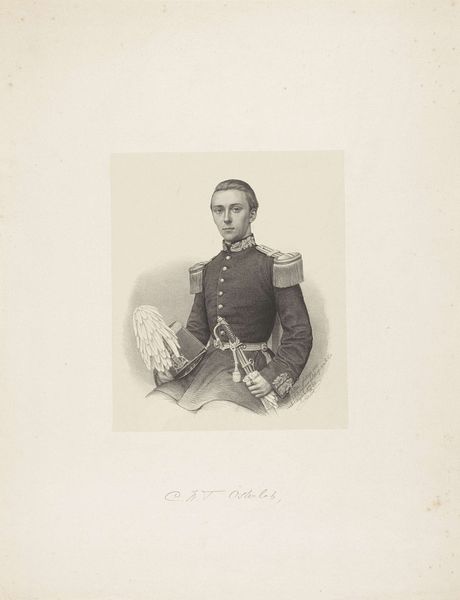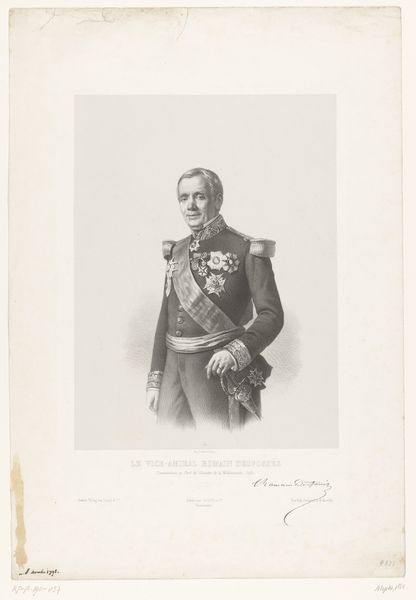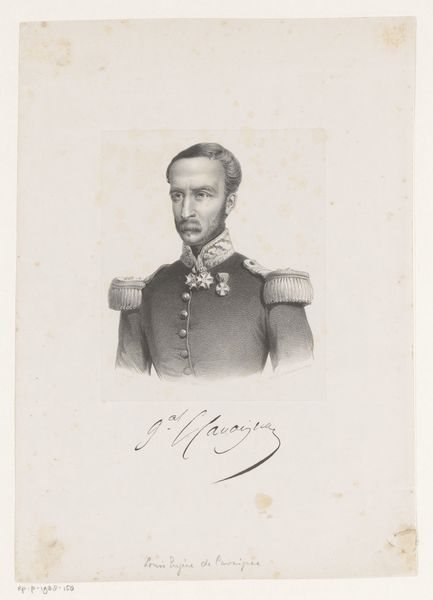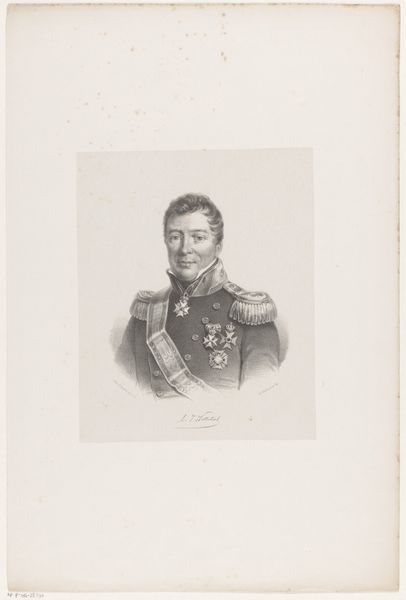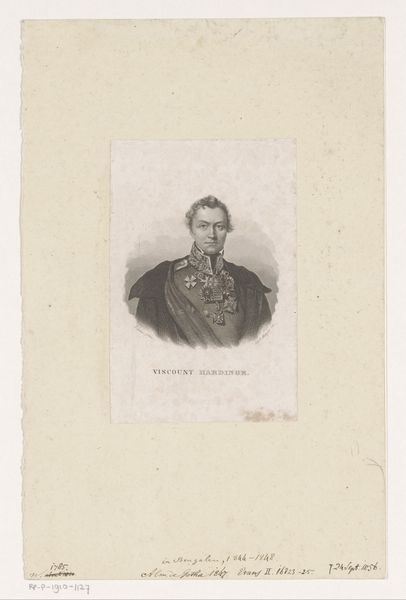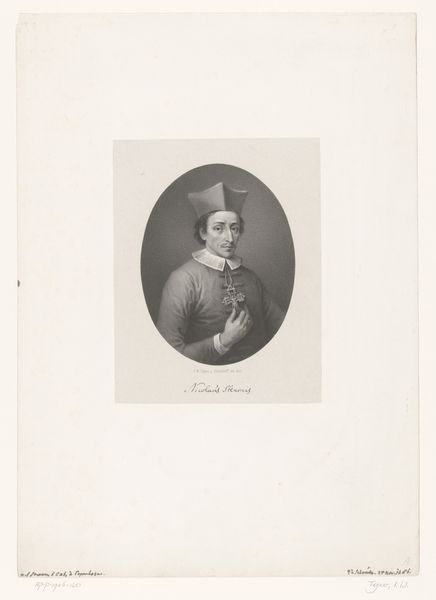
engraving
#
portrait
#
romanticism
#
history-painting
#
academic-art
#
engraving
Dimensions: height 481 mm, width 314 mm, height 215 mm, width 196 mm
Copyright: Rijks Museum: Open Domain
Editor: Here we have Heinrich Ditlev Mitreuter's "Portret van Nikolaj Nikolajevitsj Romanov," created in 1847 using engraving techniques. The formality of the portrait and his intense gaze create an aura of power. What strikes you about this work? Curator: Considering its context, this portrait speaks volumes about the construction of power within 19th-century Russian aristocracy. Notice how his youth is juxtaposed with the weight of his military attire. How does that tension contribute to your understanding of his position? Editor: It makes me think about the expectations placed upon him, and perhaps the sacrifices he might have had to make. Did art of this period often serve a specific political function? Curator: Absolutely. These portraits weren't just likenesses; they were carefully constructed statements. They reinforced the Romanov's legitimacy and projected an image of strength and imperial order to maintain social control and justify existing power structures. Do you see how the medium – engraving – itself contributes to this sense of authority and precision? Editor: Now that you mention it, the sharp lines do seem to emphasize control and exactitude. So, understanding the historical and social climate is key to interpreting this image beyond its surface? Curator: Precisely! It encourages us to examine whose stories are told, how they’re told, and whose perspectives are excluded. We must always question how art can either perpetuate or challenge dominant narratives of power, gender, and class. What narratives do you see being perpetuated in this engraving? Editor: I guess the story of male dominance, military strength, and unwavering rule...It’s been enlightening to consider the portrait not just as a representation, but as a complex symbol embedded within specific historical and social dynamics. Curator: Exactly, looking at art this way transforms the experience of understanding visual culture.
Comments
No comments
Be the first to comment and join the conversation on the ultimate creative platform.
